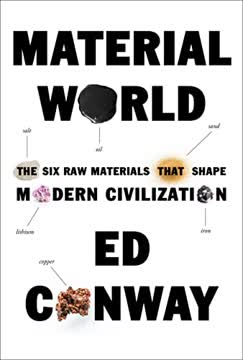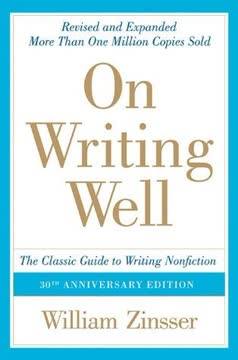Key Takeaways
1. Engineering is a Human Endeavor Prone to Error
Engineering is a human endeavor and thus it is subject to error.
Human fallibility. Engineering, unlike the precise world of mathematics, is a human endeavor, making it inherently susceptible to errors. These errors can range from minor annoyances to catastrophic disasters, highlighting the critical need for vigilance and continuous learning in the field. The Code of Hammurabi, with its severe penalties for faulty construction, underscores the long-standing recognition of this human element in engineering.
Examples of errors. History is replete with examples of engineering failures, such as the Kansas City Hyatt Regency skywalk collapse, the Tacoma Narrows Bridge collapse, and the Three Mile Island accident. These incidents serve as stark reminders of the potential consequences of human error in design, construction, and operation. The Hyatt Regency walkways, for example, collapsed due to a design change that doubled the load on a critical connection, a mistake that went unnoticed until the tragic event.
Progress through learning. Despite the potential for error, engineering has advanced significantly over time. The rarity of structural failures in technologically advanced countries attests to the effectiveness of modern engineering practices. However, the pursuit of absolute safety can conflict with economic and practical considerations, necessitating a balance between risk and progress.
2. Failure is Inherent to Growth and Innovation
Success may be grand, but disappointment can often teach us more.
Embracing failure. The history of engineering is as much a story of failures as it is of triumphs. Failures, while disappointing, provide invaluable lessons that drive innovation and improve future designs. The Code of Hammurabi, while encouraging sound construction, could not have encouraged the evolution of the house, not to mention the skyscraper and the bridge, for what builder would have found incentive in the code to build what he believed to be a better but untried house?
Learning from nursery rhymes. Even in childhood, we are introduced to the concept of structural failure through nursery rhymes and fairy tales. "London Bridge is falling down" and "Humpty Dumpty had a great fall" acknowledge the limitations of human constructions and the inevitability of failure. These stories prepare us for a world where things break, and teach us to rebuild and learn from those experiences.
The three little pigs. The story of the Three Little Pigs illustrates how underestimating the strength needed in a structure can lead to disaster. Each pig makes a different estimate of how strong their houses must be, and each reaches a different conclusion about how much strength he can sacrifice to availability of materials and time of construction. It is only the test of the wolf’s full fury that ultimately proves the third pig correct.
3. Learning from Mistakes: The Essence of Engineering
To understand what engineering is and what engineers do is to understand how failures can happen and how they can contribute more than successes to advance technology.
The value of failure. Understanding how failures occur is central to understanding engineering. By studying past mistakes, engineers can identify weaknesses in design, materials, and construction techniques, leading to safer and more reliable structures. The rarity of structural failures attests to the fact that engineering at least, even at its most daring, is not inclined to take undue risks.
Paper clip experiment. A simple experiment with paper clips demonstrates the concept of fatigue and the statistical distribution of failure. By bending paper clips back and forth until they break, students learn that failure is not always predictable and that variations in material strength and usage can affect the outcome. This low-budget experiment helps students recognize the phenomenon of fatigue and the fact that failure by fatigue is not a precisely predictable event.
Speak & Spell. The fatigue of plastic buttons on a child's Speak & Spell toy provides a relatable example of mechanical failure. The keys that failed most frequently correlated with the most commonly used letters, demonstrating the impact of repeated stress on material integrity. This example highlights the importance of anticipating potential failure points in design, even in seemingly simple products.
4. Engineering as Hypothesis: Design and Testing
Engineering design shares certain characteristics with the positing of scientific theories, but instead of hypothesizing about the behavior of a given universe, whether of atoms, honeybees, or planets, engineers hypothesize about assemblages of concrete and steel that they arrange into a world of their own making.
Design as a theory. Each engineering design can be viewed as a hypothesis about the behavior of a structure under specific conditions. The success or failure of a design serves as a test of this hypothesis, providing valuable feedback for future projects. A safe structure will be one whose weakest link is never overloaded by the greatest force to which the structure is subjected.
Testing the hypothesis. A scientific hypothesis is tested by comparing its conclusions with the reality of the world as it is. Yet, no matter how many examples of agreement one may collect, they do not prove the truth of the hypothesis, for it may be argued that one has not tested it in the single case where the theory may fail to agree with reality. On the other hand, just one instance of disagreement between the hypothesis and reality is sufficient to make the hypothesis incontrovertibly false.
Galileo's cantilever beam. Galileo's analysis of the cantilever beam illustrates the importance of accurate quantitative analysis. While he correctly identified the relationship between beam strength and depth, his analysis was not entirely accurate, highlighting the potential for errors in reasoning. Such errors can have significant consequences in engineering design, emphasizing the need for rigorous testing and verification.
5. Success in Engineering is Foreseeing and Preventing Failure
All the successes of engineering as far back in history as the pyramids and as far into the future as the wildest conceptions of mile-high skyscrapers may be imagined to have begun with a wish to achieve something without failure...
Anticipating failure. The primary goal of engineering is to create structures that function reliably and safely. This requires anticipating potential failure modes and designing to prevent them. The earliest engineering structures may have been designed by trial and error, and it may be argued that the Egyptian pyramids were built using that method.
Pyramid construction. The evolution of pyramid design in Egypt demonstrates the iterative process of learning from failures. Early pyramids, like the Bent Pyramid at Dahshur, show evidence of design changes made in response to structural instability. Subsequent pyramid builders learned from these mistakes, building higher but with more conservative angles.
Cathedral construction. Medieval cathedrals also evolved through experimentation and trial and error. The addition of flying buttresses and pinnacles was often a response to cracking and instability in the masonry. These examples highlight the importance of continuous monitoring and adaptation in engineering design.
6. Design is a Journey: From Concept to Reality
Designing a bridge or any other large structure is not unlike planning a trip or a vacation.
The design process. Designing a bridge or any other large structure is a complex process involving numerous decisions and trade-offs. Like planning a vacation, the end goal may be clear, but the means of achieving it can vary widely. The object of a science may be said to be to construct theories about the behavior of whatever it is that the science studies.
Bridge design. The evolution of bridge design, from timber to iron to steel, reflects the constant pursuit of stronger, more efficient structures. The development and expansion of the railroads in the nineteenth century required bridges, and timber provided the material of many of the early railroad bridges. It was a familiar material and one that was usually available near the construction site.
Balancing factors. The design process involves balancing functional, aesthetic, and economic considerations. Engineers must consider the intended use of the structure, its visual appeal, and the cost of materials and construction. The choice of materials, structural form, and construction techniques all contribute to the overall success of the design.
7. Design as Revision: The Iterative Pursuit of Perfection
It is this aspect of the analogy that is most helpful in understanding how the celebrated writers and engineers alike learn more from the errors of their predecessors and contemporaries than they do from all the successes in the world.
The iterative process. Engineering design, like writing, is an iterative process involving successive revisions and refinements. The initial design is rarely perfect and must be checked, analyzed, and modified to address potential weaknesses and improve performance. The object of a science may be said to be to construct theories about the behavior of whatever it is that the science studies.
Learning from errors. Just as writers learn from their discarded drafts, engineers learn from the failures of previous designs. By studying past mistakes, engineers can identify common pitfalls and develop strategies to avoid them in future projects. The fundamental feature of all engineering hypotheses is that they state, implicitly if not explicitly, that a designed structure will not fail if it is used as intended.
Maillart's bridges. The bridges of Robert Maillart demonstrate the iterative nature of design. Maillart learned from the cracking of his early designs and the designs of others, such as François Hennebique, to create innovative and elegant concrete structures. His practice of self-criticism and revision was not unlike the writer’s.
8. Accidents Waiting to Happen: The Importance of Details
The Kansas City tragedy was front-page news because it represented the largest loss of life from a building collapse in the history of the United States.
The Hyatt Regency collapse. The collapse of the skywalks at the Kansas City Hyatt Regency Hotel serves as a tragic example of how seemingly minor design changes can have catastrophic consequences. A change in the suspension system, intended to simplify construction, doubled the load on a critical connection, leading to the failure of the structure. The Kansas City tragedy was front-page news because it represented the largest loss of life from a building collapse in the history of the United States.
The Mianus River Bridge collapse. The collapse of a section of the Mianus River Bridge in Connecticut highlights the importance of proper maintenance and inspection. Corrosion of a critical hanger link, combined with the bridge's skewed design, led to the sudden failure of the structure. The Mianus Bridge was what is known as a “pin-connected hung span,” complicated by the fact that it crossed the river at an angle and was thus skewed on its supports.
The Silver Bridge collapse. The collapse of the Point Pleasant Bridge (Silver Bridge) across the Ohio River underscores the dangers of undetected corrosion and fatigue. The failure of a single link in the bridge's suspension chain led to a progressive collapse, resulting in significant loss of life. The roadway of Silver Bridge (as the Point Pleasant Bridge was nicknamed due to the fact it was the first bridge to be painted with aluminum paint) was suspended not from the round wire cables familiar in most modern suspension bridges but from two giant chains made up of fifty-foot-long links, or “eyebars.”
9. Safety in Numbers: The Role of Factors of Safety
Murphy’s Law, holding that anything that can go wrong will, is not a law of nature but a joke.
The factor of safety. The factor of safety is a critical concept in engineering design, providing a margin of error to account for uncertainties in materials, loads, and construction. It is calculated by dividing the load required to cause failure by the maximum load expected to act on a structure. The factor of safety is calculated by dividing the load required to cause failure by the maximum load expected to act on a structure.
Balancing safety and economy. While a high factor of safety can increase the reliability of a structure, it can also lead to increased costs and reduced efficiency. Engineers must balance the need for safety with economic and practical considerations. All bridges and buildings could be built ten times as strong as they presently are, but at a tremendous increase in cost, whether financed by taxes or private investment.
Learning from experience. The appropriate factor of safety for a given structure is often determined by experience and judgment. After a structural failure, engineers typically increase the factor of safety for similar designs. Conversely, when structures perform reliably over time, there is a tendency to reduce the factor of safety.
10. When Cracks Become Breakthroughs: The Value of Failure Analysis
Because man is fallible, so are his constructions, however.
The inevitability of cracks. Cracks are a common occurrence in engineering structures, and their presence does not necessarily indicate imminent failure. However, understanding the causes and behavior of cracks is essential for preventing catastrophic collapses. The Liberty Bell, whose crack represents one of the most famous engineering failures in our history, symbolizes more than political independence.
Fatigue failure. Fatigue, the progressive weakening of a material due to repeated stress, is a major cause of structural failure. Engineers must design structures to withstand fatigue and implement inspection programs to detect and monitor crack growth. Children’s toys are especially prone to fatigue failure, not only because children subject them to seemingly endless hours of use but also because the toys are generally not overdesigned.
Nondestructive testing. Nondestructive testing techniques, such as ultrasonic testing and X-rays, can be used to detect cracks and other flaws in materials without damaging the structure. However, these techniques have limitations, and engineers must be aware of their sensitivity and accuracy. The effects of those flaws on the structure throughout the course of its lifetime can be calculated as part of the design, and engineers can alert owners and operators of their structures to be vigilant for growing cracks lest the calculations themselves be flawed.
11. Of Bus Frames and Knife Blades: The Limits of Design
As much as it is human to make mistakes, it is also human to want to avoid them.
The Grumman Flxible bus. The story of the Grumman Flxible bus illustrates the challenges of balancing multiple design requirements. The pursuit of fuel efficiency, accessibility, and comfort led to a lightweight frame that was prone to cracking. The buses that were not finishing their marathon service along the city’s routes were known as Grumman Flxibles after their manufacturer, the Grumman Flxible Corporation, a division of the airplane company.
The cracked knives. The cracked stainless steel knives provide a relatable example of material failure. The cracks, located at the base of the blade, raised questions about the knives' safety and prompted an investigation into their origin and potential for further growth. The natural fragileness of things comes to be forgotten, for we have learned to take it easy on the man-made world.
Balancing factors. The design process often involves trade-offs between performance, cost, and safety. Engineers must make difficult decisions about how to balance these competing factors, recognizing that no design can be perfect. The natural fragileness of things comes to be forgotten, for we have learned to take it easy on the man-made world.
12. Connoisseurs of Chaos: Balancing Order and Disorder
A. A violent order is disorder; and
B. A great disorder is an order. These
Two things are one.…
The causes of failure. The causes of structural failures are often complex and multifaceted. While various lists and classifications exist, no single framework can fully capture the range of factors that contribute to accidents. The question, then, should not only be why do structural accidents occur but also why not more of them?
The human element. Human error, whether in design, construction, or operation, is a significant factor in many structural failures. However, it is important to recognize that engineers and other professionals are often working under difficult conditions and are subject to limitations in knowledge, resources, and time. The question, then, should not only be why do structural accidents occur but also why not more of them?
The role of information. The timely dissemination of information about structural failures is essential for preventing future accidents. By sharing lessons learned from past mistakes, engineers can improve their designs and construction practices. The question, then, should not only be why do structural accidents occur but also why not more of them?
Last updated:
FAQ
What is To Engineer Is Human: The Role of Failure in Successful Design by Henry Petroski about?
- Exploration of engineering and failure: The book examines how failure is central to the engineering process, arguing that mistakes and breakdowns are not just inevitable but essential for progress and innovation.
- Human aspect of engineering: Petroski emphasizes that engineering is a fundamentally human endeavor, shaped by creativity, judgment, and error.
- Design and learning: The narrative uses historical and contemporary examples to show how engineers learn from failures to create safer, more reliable structures.
Why should I read To Engineer Is Human by Henry Petroski?
- Demystifies engineering: The book provides clear, accessible explanations of what engineers do and why their work matters, making it suitable for both technical and non-technical readers.
- Highlights the value of failure: Petroski shows how failures are not just setbacks but valuable learning opportunities that drive technological advancement.
- Broader implications: The book offers insights into human nature, risk, and the process of learning from mistakes, making it relevant to anyone interested in problem-solving and innovation.
What are the key takeaways from To Engineer Is Human by Henry Petroski?
- Failure as a teacher: Failures reveal design limitations and provide critical lessons that guide safer and more effective engineering.
- Cycle of success and failure: Engineering advances through a cycle where periods of success lower safety margins, eventually leading to failures and subsequent improvements.
- Human factors matter: Many failures stem from human error, economic pressures, or communication breakdowns, highlighting the importance of ethical responsibility and oversight.
What is Henry Petroski’s central thesis about failure in engineering design?
- Failure is inevitable and instructive: Petroski argues that failure is central to engineering because it exposes weaknesses and errors that can be corrected.
- Learning and progress: Failures contribute more to engineering knowledge than successes, leading to improved designs and greater safety.
- Cycle of improvement: The book describes how repeated cycles of failure and success drive technological advancement.
How does To Engineer Is Human by Henry Petroski define the engineering design process?
- Design as hypothesis: Engineering design is likened to a scientific hypothesis, where the engineer predicts that a structure will perform its intended function without failure.
- Testing and revision: Designs are analyzed and revised repeatedly, but absolute certainty is impossible due to unpredictable future conditions.
- Creative and analytical blend: The process combines imaginative leaps with rigorous scientific analysis to create structures that are both functional and elegant.
What role do factors of safety play in engineering, according to Henry Petroski?
- Margin for error: Factors of safety provide a numerical buffer to account for uncertainties in materials, loads, and human error.
- Balancing act: Engineers must balance safety with economic and architectural considerations, as higher safety margins increase cost and bulk.
- Dynamic adjustment: Safety factors tend to fluctuate over time, increasing after failures and decreasing during periods of success, leading to cycles of improvement and risk.
How does Henry Petroski illustrate the human aspect of engineering through childhood experiences?
- Innate engineering instincts: Petroski shows that humans have an intuitive grasp of engineering principles from infancy, as seen in learning to balance, walk, and build.
- Stories and play: Nursery rhymes and fairy tales introduce concepts of structural failure and design, emotionally preparing us for real-world engineering challenges.
- Trial and error: The process of falling and rebuilding in childhood mirrors the iterative, failure-driven nature of engineering.
What are some notable engineering failures discussed in To Engineer Is Human, and what lessons do they provide?
- Hyatt Regency skywalk collapse: A design change led to a weak connection and collapse, highlighting the dangers of unvetted modifications.
- Bridge failures: The Mianus River and Silver Bridge collapses illustrate the consequences of corrosion, fatigue, and lack of redundancy.
- DC-10 engine mount failure: This case shows how maintenance procedures can introduce new risks, emphasizing the need to consider real-world use and human factors.
How does Henry Petroski explain fatigue and crack growth in engineering materials?
- Fatigue as a common failure mode: Many failures result from repeated loading, which causes microscopic cracks to grow until catastrophic failure occurs.
- Laboratory vs. real-world: While fatigue can be studied in controlled settings, real structures face variable loads and imperfections that complicate predictions.
- Design strategies: Engineers use fail-safe and safe-life philosophies, nondestructive testing, and safety factors to manage fatigue risks, but uncertainties remain.
What is the significance of the Crystal Palace story in To Engineer Is Human by Henry Petroski?
- Innovation and risk: The Crystal Palace exemplifies how daring engineering projects can succeed through careful design, testing, and adaptation.
- Legacy: Its modular iron and glass construction pioneered methods still influential in modern architecture and engineering.
- Contrast with failure: Petroski uses the Crystal Palace to show that innovation can lead to both spectacular successes and failures, each offering valuable lessons.
How does Henry Petroski describe the impact of computers on engineering practice in To Engineer Is Human?
- Transformation of calculation: The shift from slide rules to computers has enabled more complex analyses and changed how engineers work.
- Risks of overreliance: Petroski warns that dependence on computers can erode intuition and critical judgment, as engineers may accept outputs without questioning assumptions.
- Need for oversight: Computers are tools that require knowledgeable engineers to interpret results and ensure safety, especially in innovative or complex designs.
What are the limits of design and innovation according to Henry Petroski in To Engineer Is Human?
- Inherent compromises: All designs involve trade-offs among conflicting requirements, making perfect solutions impossible.
- Uncertainty and evolving knowledge: Designs are based on assumptions that may change, leading to surprises and the need for iterative improvement.
- Cycle of progress: Innovation involves risk, and while some projects fail, these failures generate new knowledge and safer designs for the future.
Review Summary
To Engineer Is Human explores how engineering failures lead to innovation and learning. Petroski argues that failure is essential for progress, as it reveals design flaws and pushes engineers to improve. The book examines various case studies, from bridge collapses to aircraft accidents, highlighting the tension between safety and innovation. Readers appreciate Petroski's ability to make engineering accessible to laypeople, though some find the writing repetitive. The book's insights on learning from mistakes and the human aspect of engineering resonate with many, while its dated technology references add historical context.
Similar Books










Download PDF
Download EPUB
.epub digital book format is ideal for reading ebooks on phones, tablets, and e-readers.













